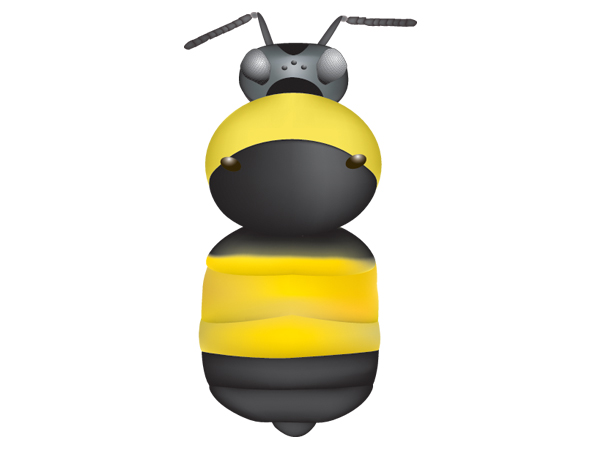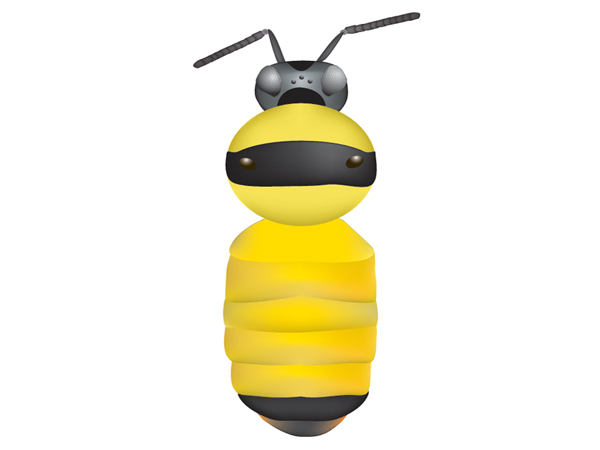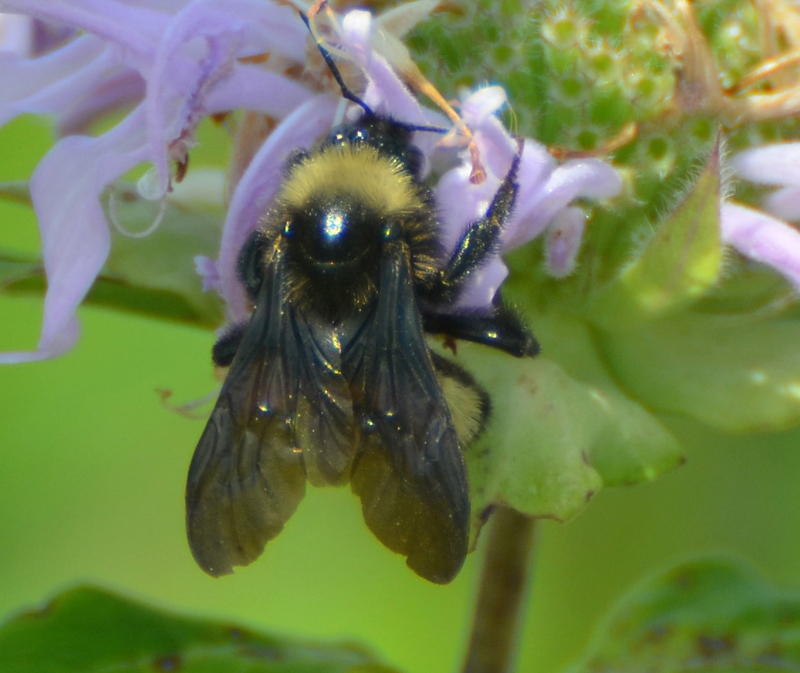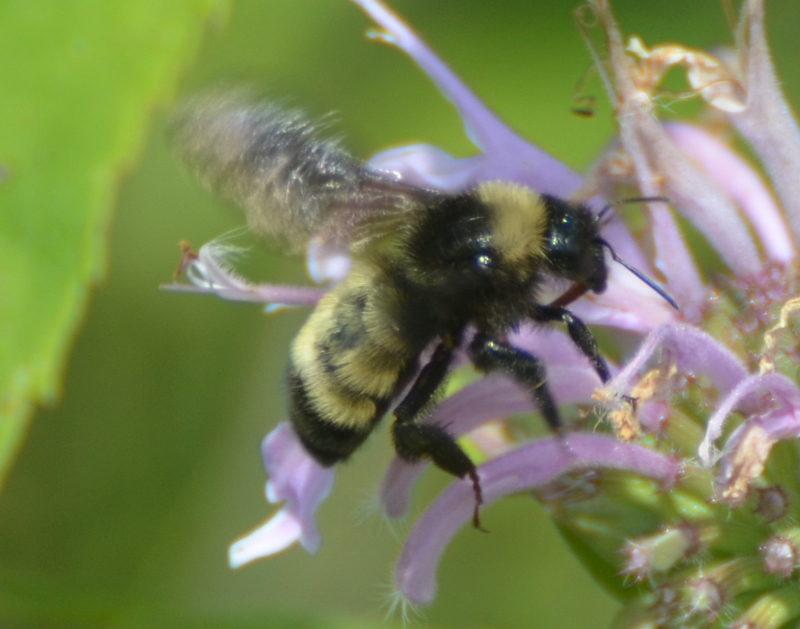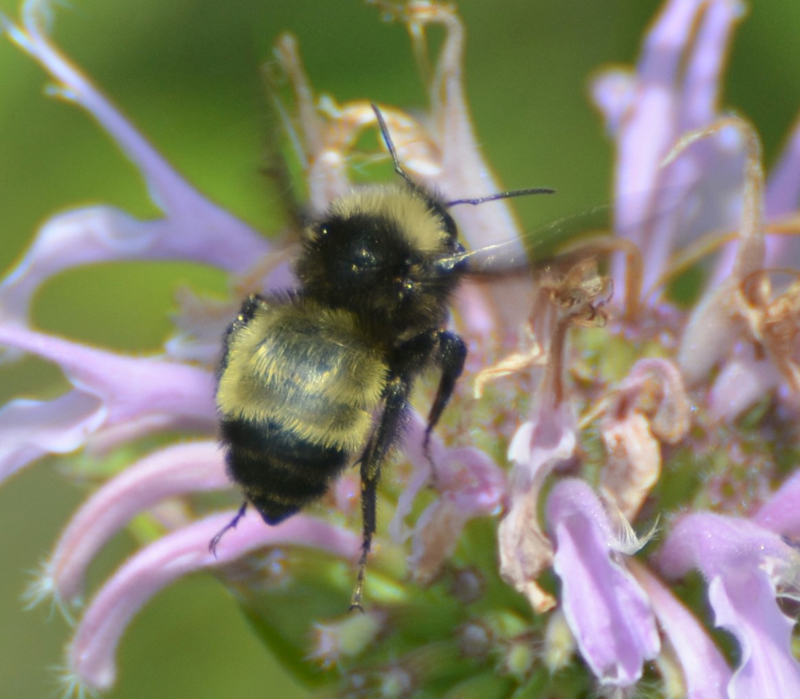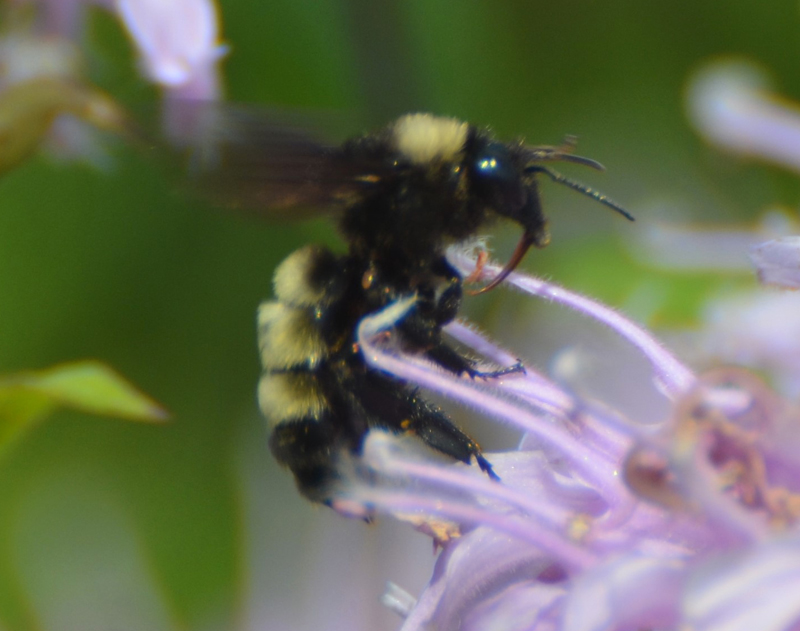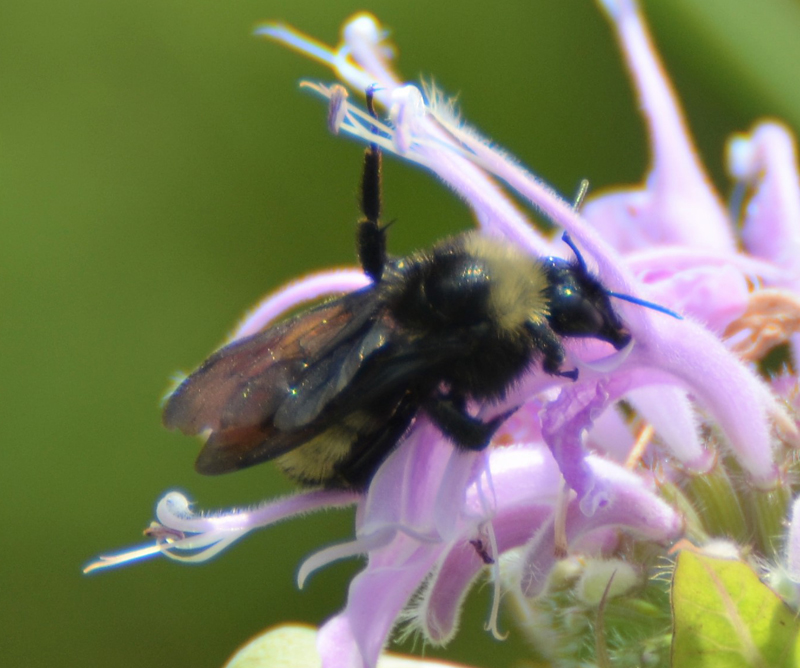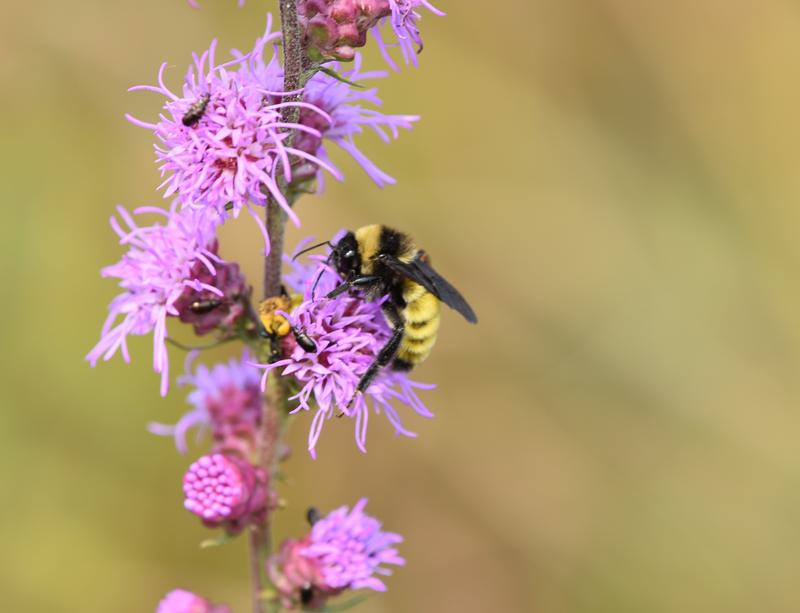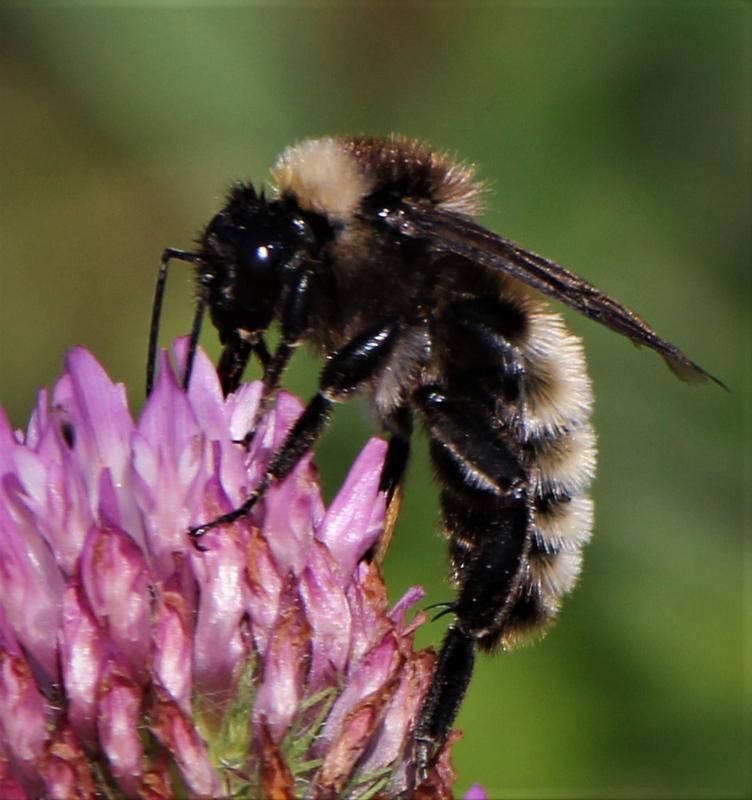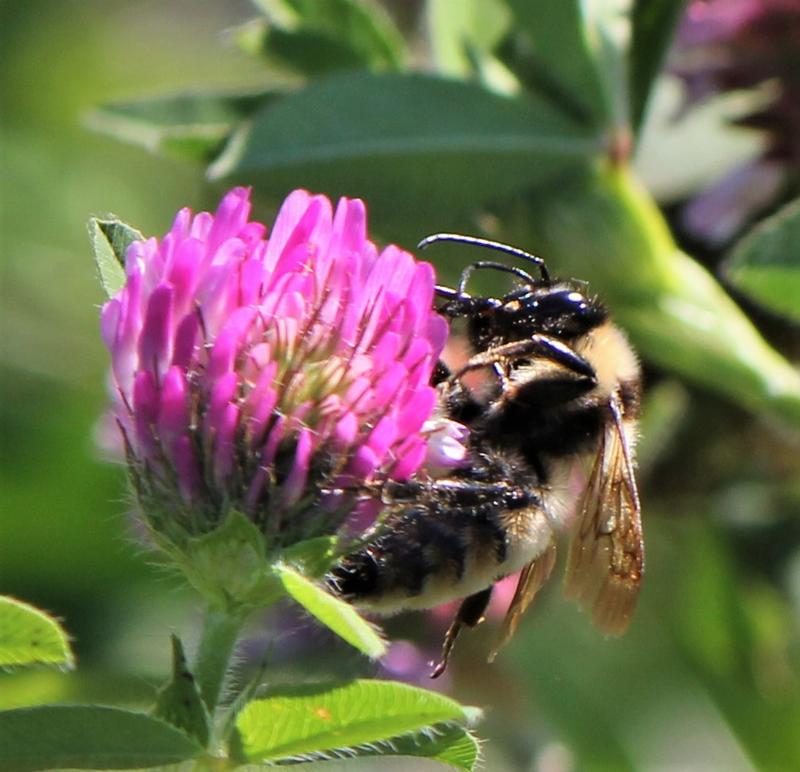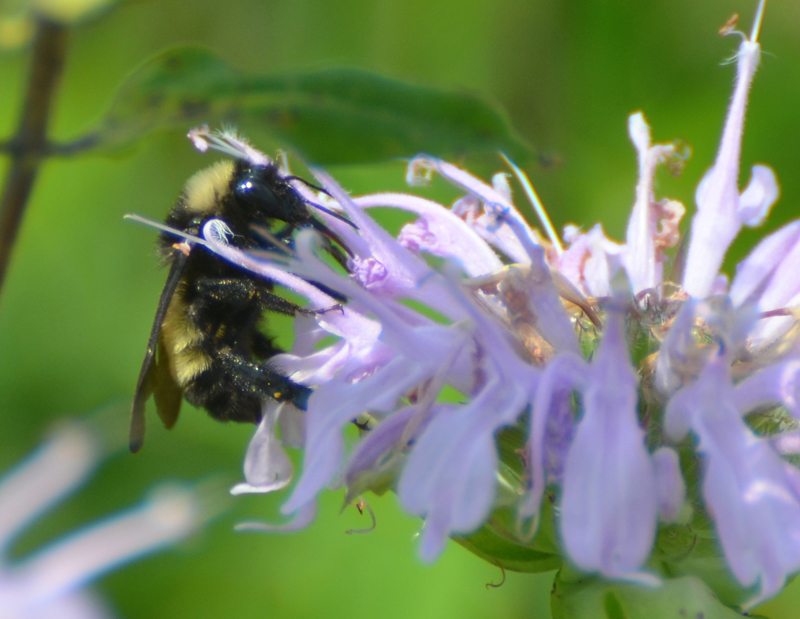
Status-Global/State:
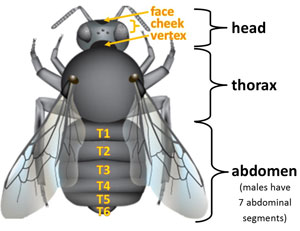
Identification:
- Worker – Face and vertex black. Thorax yellow with large black band between the wingpads extending down the sides and sometimes down to the abdomen. Abdominal segment T1-3 yellow, and T4-5 and T6 black. Some morphs are black or intermixed on segment T1.
- Queen/gyne – Similar to workers, but are larger and appear earlier in the season.
- Male – Face and vertex black or intermixed. Thorax yellow with black band between the wingpads. Abdominal segments T1-5 yellow and T6-T7 black. Some morphs have a yellow T5 or with intermixed fringes and T6-T7 orange, black, or intermixed.
- Other distinguishing features – Large bee with dark wings and a long cheek/face.
Similar Wisconsin Species:
Similar bumble bee species in Wisconsin are black and gold bumble bee (B. auricomus) and yellowbanded bumble bee (B. terricola) (Colla et al. 2011, Williams et al. 2014).
Description of Habitat/Range:
Known habitats include open fields, and farmland (Williams et al. 2014). Nests have been found mostly ground surface among long grasses, but occasionally underground (Williams et al. 2014).
Nectar Plants
The American bumble bee is a long-tongued species (Williams et al. 2014). Nectar plants include Astragalus (milk vetch), Cirsium (thistles), Cornus (bunchberry), Dalea (prairie clover), Echinacea (purple coneflowers), Eupatorium (Joe-pye weed), Helianthus (sunflowers), Hypericum (St. John's wort), Kallstoemia, Liatris, Lotus corniculata, Mentzelia, Silphium, Solanum, Solidago (goldenrods), Vicia (vetches), Trifolium (clovers), and Vicia (vetches) (Williams et al. 2014, Colla et al. 2011).
Data from verified B3 observations [updated 2/28/2024].
Flight Season:
In Wisconsin, the majority of observations have been reported between May and September. Range-wide, queens start emerging in May and enter diapause in September (Colla et al. 2011).
Literature Cited:
Colla, S., Richardson, L. and Williams, P. (2011) Bumble Bees of the Eastern United States. A product of the USDA Forest Service and the Pollinator Partnership with funding from the National Fish and Wildlife Foundation.
Hatfield, R., Jepsen, S., Thorp, R., Richardson, L., Colla, S. & Foltz Jordan, S. 2015. Bombus pensylvanicus. The IUCN Red List of Threatened Species 2015: e.T21215172A21215281.
Williams, P.H., Thorp, R.W., Richardson, L.L. and Colla, S.R. (2014) The Bumble bees of North America: An Identification guide. Princeton University Press, Princeton.
